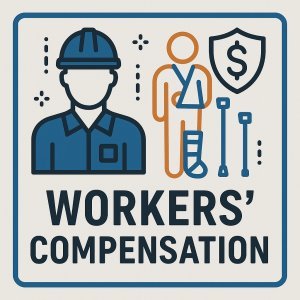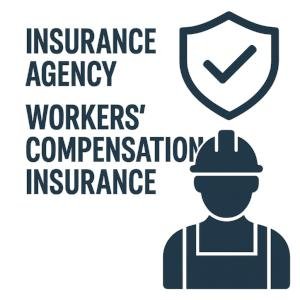
Building a Workers’ Comp Policy—Georgia ASO
August 3, 2025
Workers Comp Claims Severity: Data-Driven Reduction Tactics
August 3, 2025
In the competitive landscape of senior care services in Georgia, maintaining regulatory compliance is not only a legal obligation but a critical factor influencing operational costs. One frequently enough overlooked result of failing to adhere to workplace safety standards enforced by the Occupational Safety and Health Administration (OSHA) is the considerable increase in workers’ compensation insurance premiums. This article explores the direct correlation between OSHA citations and the escalation of workers’ comp costs in Georgia’s senior care facilities, highlighting the financial implications for facility operators and emphasizing the importance of proactive safety management to mitigate risks and control expenses.
table of Contents
- Impact of OSHA citations on Workers’ Compensation Costs in Georgia Senior Care facilities
- Common OSHA Violations Leading to Increased Workers’ compensation Premiums
- Strategies for Senior Care Facilities to Mitigate OSHA Citation Risks
- Best Practices for Managing Workers’ Compensation Expenses Post-Citation
- Q&A
- Future Outlook
Impact of OSHA Citations on Workers’ Compensation costs in Georgia Senior Care Facilities
- Frequency and gravity of the citation(s)
- History of previous workplace injuries and claims
- Implementation of corrective actions and ongoing safety improvements
- Size and staffing levels of the care facility
| Citation Severity | Average Premium Increase | Common violations |
|---|---|---|
| Low | 5-10% | Incomplete training, minor recordkeeping errors |
| Moderate | 15-25% | Ergonomic hazards, failure to provide PPE |
| High | 30-50% | Repeated violations, unsafe patient handling practices |
Common OSHA Violations Leading to Increased Workers’ Compensation Premiums
| Violation Type | Impact on premiums | Preventive Action |
|---|---|---|
| Hazard Communication | 15-20% Increase | Proper labeling & staff training |
| PPE Non-compliance | 10-18% Increase | Mandatory use & regular audits |
| Ergonomics | 12-22% Increase | Ergonomic assessments & training |
| Recordkeeping | 8-15% Increase | Timely incident documentation |
strategies for Senior Care Facilities to Mitigate OSHA Citation Risks
- conducting routine internal safety audits to uncover and rectify compliance gaps
- Developing customized safety plans tailored to specific care settings and resident needs
- Engaging leadership in visible safety oversight to reinforce organizational commitment
- Utilizing technology solutions, such as incident reporting software, to track and analyze workplace accidents
| Strategy | Benefit | Implementation Tip |
|---|---|---|
| Regular Safety Audits | Early issue detection | Schedule audits quarterly |
| Customized Safety Plans | Targeted risk mitigation | Include staff in planning |
| Leadership Engagement | Stronger safety culture | Monthly safety briefings |
| Technology Integration | improved incident tracking | Adopt user-pleasant platforms |
Best Practices for Managing Workers’ Compensation Expenses Post-Citation
| Best Practise | Impact on Costs | Implementation tip |
|---|---|---|
| Safety Training Refreshers | Reduces incidents by 30% | Schedule quarterly sessions |
| Incident Reporting Systems | Improves hazard detection | Use mobile apps for ease |
| Early Claims Intervention | decreases claim duration by 20% | Assign dedicated claims coordinator |
| Documentation of Compliance | Aids premium negotiations | Maintain digital records |
Q&A
Q&A: How OSHA Citations Spike Workers’ Comp Premiums in Georgia Senior Care Facilities
Q1: What is the relationship between OSHA citations and workers’ compensation premiums in Georgia senior care facilities?
A1: OSHA citations frequently enough signal workplace safety violations, which can directly impact a facility’s workers’ compensation premiums. In Georgia senior care facilities, citations reflect increased risk and can lead insurers to raise premiums to cover potential higher claims costs associated with workplace injuries.
Q2: Why are senior care facilities particularly affected by OSHA citations?
A2: Senior care facilities involve physically demanding tasks and exposure to health hazards for employees,such as lifting patients and potential exposure to infectious diseases. These risks make regulatory compliance crucial.OSHA citations in this sector often highlight inadequacies in safety protocols, which insurers interpret as increased risk, thus driving up workers’ comp costs.
Q3: How do OSHA citations influence the rating of workers’ compensation insurance?
A3: Insurance underwriters evaluate a facility’s safety record when determining premiums. OSHA citations typically contribute to a poorer safety rating and may lead to higher Experience Modification Rates (EMR). A higher EMR increases the cost of workers’ compensation insurance as it implies greater likelihood or severity of workplace injuries.
Q4: What types of OSHA violations most commonly cause increased premiums in these facilities?
A4: Common violations include failure to provide adequate employee training, improper use of personal protective equipment (PPE), inadequate patient lifting procedures, and insufficient infection control measures. These infractions expose workers to injury and illness, prompting insurers to adjust premiums accordingly.
Q5: Can senior care facilities in Georgia mitigate the impact of OSHA citations on their workers’ compensation premiums?
A5: Yes. Facilities can implement robust safety programs, conduct regular employee training, and promptly address any cited hazards. Proactive risk management and compliance can reduce the likelihood of citations and improve the facility’s safety profile, helping to stabilize or reduce workers’ compensation premium increases.
Q6: What are the financial implications of increased workers’ compensation premiums for senior care facilities?
A6: Higher premiums increase operating costs, possibly affecting facility budgets and profitability. These additional expenses may limit resources available for staffing, training, or facility improvements, ultimately impacting the quality of care provided to residents.Q7: How crucial is OSHA compliance for risk management strategies in Georgia senior care facilities?
A7: OSHA compliance is critical. It not only protects workers and residents but also plays a central role in controlling insurance costs. Effective compliance programs serve as frontline defenses against workplace injuries and can significantly reduce the financial burdens associated with workers’ compensation.
Q8: what steps should senior care facility administrators take immediatly after receiving an OSHA citation?
A8: Administrators should thoroughly review the citation, develop and implement corrective action plans, and communicate transparently with OSHA, employees, and insurers. Documenting remediation efforts can demonstrate commitment to safety and may positively influence insurance premium negotiations.
This Q&A provides a comprehensive overview of how OSHA citations impact workers’ compensation premiums specifically in the context of Georgia senior care facilities, emphasizing the importance of compliance and proactive safety management from a business perspective.
Future Outlook
the correlation between OSHA citations and increased workers’ compensation premiums presents a critical challenge for senior care facilities in Georgia.Understanding the financial ramifications of workplace safety violations underscores the importance of proactive risk management and compliance strategies. by prioritizing employee safety and addressing potential hazards promptly, senior care providers can not only improve working conditions but also mitigate the impact of costly insurance premiums. Ultimately,fostering a culture of safety is essential for sustaining operational efficiency and safeguarding both staff well-being and organizational financial health in this highly regulated sector.
“This content was generated with the assistance of artificial intelligence. While we strive for accuracy, AI-generated content may not always reflect the most current information or professional advice. Users are encouraged to independently verify critical information and, where appropriate, consult with qualified professionals, lawyers, state statutes and regulations & NCCI rules & manuals before making decisions based on this content.






